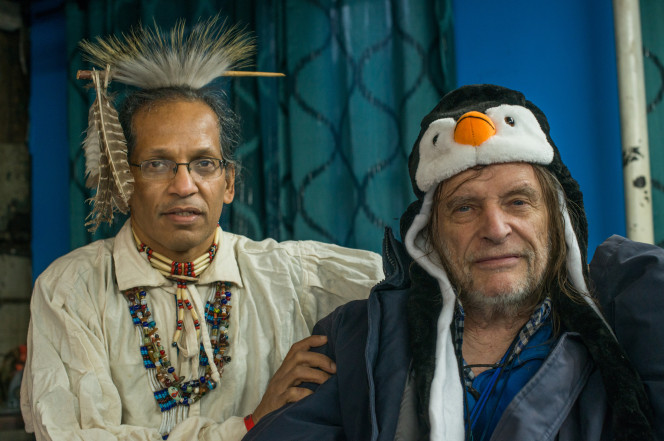
Millionaire returning $4M piece of Manhattan to Indian tribe


An eccentric millionaire is giving Manhattan back to the American Indians — at least his small part of it.
Jean-Louis Goldwater Bourgeois, 76, an architectural historian and activist for Native American causes, is in the process of transferring the deed of his $4 million, landmarked West Village house to a nonprofit controlled by the Lenape tribe, the original Manhattanites.
“I have a romance with the history of the city, and I have been generally appalled that the land that the city is on has been taken by whites,” he told The Post.
“This building is the trophy from major theft. It disgusts me.”
He said he feels “rage against what whites have done and some guilt, no, a lot of guilt, that I have profited from this major theft. The right thing to do is to return it.”
Bourgeois, the son of the late sculptor Louise Bourgeois, has owned the three-floor clapboard house at 6 Weehawken St. since his family’s LLC bought it in 2006 for $2.2 million.

The house dates to 1834, when it was part of a larger city-owned market building. It is believed to be all that is left of the complex. Part of the Weehawken Street Historic District, the building faces West Street and the Hudson River.
Bourgeois had lived there for three years when he met Joseph Scabby Robe, a Cree Indian from Manitoba, Canada, during the 2011 Occupy Wall Street protest downtown.
“I told Joseph that I’d like to return the land to the Lenapes,” Bourgeois recalled. “The house isn’t important. It’s the land that the house sits on that’s important.”
Robe introduced Bourgeois to Anthony Jay Van Dunk, 54, a chief of the 5,000-member Ramapough Indians, part of the Lenape Nation. Van Dunk, a Brooklyn woodworker, spoke in his native Munsee language at a 2011 UN forum titled The State of Native Americans Today.
‘I have been generally appalled that the land that the city is on has been taken by whites.’
Van Dunk “represents the tribe, and I represent the whites,” Bourgeois said of the meeting that led to the land deal.
Both men gave The Post a tour of the house last week. Van Dunk wore a tribal headdress. Bourgeois wore a fuzzy hat that looked like a penguin.
“I told Jean-Louis about the idea of a patahmaniikan, or a prayer house,” Van Dunk said. “He liked it, and we went forward from there.”
Besides the ongoing legal work to establish the nonprofit project under Lenape oversight, the men had to conduct a ritual ceremony.
“The purpose of that was to let the spirits know what was about to happen and what our vision was for the space,” Van Dunk said. “We had a pipe. We had a smudging. We had prayers being said. It was a healing. We wanted the spirits to know we were coming in with a good heart.
“Our doors are always east and west,” Van Dunk added. “In most native traditions you always have your entry door in the east and then, spiritually, the west is how you leave after your journey here on earth is done.”
The prayer house is “going to be a place of safety,” he said. “The purpose is to get indigenous people in touch with their language, their tradition.”
Bourgeois, who just returned to New York after spending eight weeks in North Dakota protesting the proposed pipeline near the Sioux Standing Rock Indian Reservation, said, “I’m extremely interested in the Lenapes.”

He said he was a “benefactor” at Standing Rock.
“I’ve given over $600,000 to the Oceti Sakowin camp site,” home to Dakota Access Pipeline protesters, he said.
“Money goes to buying food, firewood, protective hay bales and transportation. I spent time at the Sacred Fire. Standing Rock is a turning point in American history.”
The Lenapes were the original inhabitants of Mannahatta — land of many hills. They were widely represented as the tribe that sold the island to the Dutch for $24 worth of trinkets in 1626 — a story debunked by many modern historians.
“The native people actively engaged with the Dutch, who were part of the fur trade in this area, so there were constant exchanges,” said Johanna Gorelick, of the Smithsonian National Museum of the American Indian in New York City. “They did not believe at that time that land could be privately owned. It was something that wasn’t part of their world view. The sale of Manhattan was a misunderstanding.”












